Saturday morning was partially cloudy but still bright. After a tasty breakfast and green tea at our hotel, we went to start our agenda on the Bygdøy Peninsula.
It draws visitors because it has the Viking Ship Museum and the Norwegian Cultural Museum. It is where the King and Queen spend the summer at their "country estate": the Royal Manor & Farm. (The Crown-Princely couple reside on their own estate named Skaugum Manor). Many Osloites have two homes: an urban home and a countryside one. As a Nordic nation, Norway upholds an idea of "coziness and harmony" named Koselig. During a prior trip to the Kingdom of Denmark, we saw its version, named Hygge...
... and during our time in Japan, it was named Ikigai.
Norwegians regularly allow their lives to include Koselig: a coziness that avoids annoyances and includes soothing, gentle things that "warm the heart" and "nourish the soul". You can call them "Zen moments": usually "unplugged" from electronic devices and full of friendship, comfort, and Mother Nature throughout every season. That is why they remain one of the world's Happiest Nations, year after year.
The thing that Norwegians (and those aforementioned cultures) can do naturally is the thing that over-stressed Americans pay specialists to help them get accustomed to. Thankfully, Lewis and I already know how to behave with "unplugged" coziness and let our minds/souls focus on what's truly important.
When you live in an orderly society with a conscientious population, it is easier.
Where we currently live, you can't see orderliness unless you watch scenes from the fictitious film Pleasantville...
You can get to Bygdøy Peninsula by car, bus, or boat. Being in a seafaring nation, we wanted to use boats as often as possible. So, we walked to the piers at City Hall.
Seen above, the city's ferries carry passengers to islands in the fjord and some do long-distance rides farther south.
But to get to Bygdøy, you must buy tickets aboard a vintage boat. To keep things simple, it departs from the same area as the ferries. Following the signs, we arrived at Pier B9 for the Bygdøy Yacht Charter, which shuttles people back and forth. The price of both roundtrip tickets ($18) was not included in our Transit Passes. Soon, a long queue formed behind us. The boat arrives every 10 minutes throughout the day. It was a vintage motorboat that gleamed with careful upkeep.
It was vastly different from the old ferries used by NYC that are outdated and neglected. It was purposely an old boat to imbue our ride with nostalgic vibes. NYC cannot claim the same thing. Sitting on (unripped and stain-free) red leather cushions, we peeked out the windows as the boat cast-off.
Making ripples in the fjord, it floated us past the Norwegian Ship Expedition Museum (seen below) to a dock named Dronningen (The Queen's Dock).
We stepped ashore at a picture-perfect Harbor Building & Cafe. It looked like the type that appear in Hallmark TV shows.
The region was always used by wealthy families to build their homes. We learned that white paint was the priciest (in olden days), so white homes were status symbols. Most of Norway's historic homes are painted red or yellow, because those colors were more affordable. We were impressed that many of the old houses are perfectly preserved, yet they are comfortably juxtaposed with contemporary ones and Art Deco homes. That harmonious blend is symbolic of Oslo.
It had hundreds of apple trees, but greedy developers and uncaring builders chopped them down and razed the orchards to erect apartments: only 3 trees remain of 300.
While walking, we admired the shiny clay-tiled roofs that gave a "new" appearance to the historic homes.
Those glazed roof tiles have a lifespan of 70 years and are impermeable to rain. Americans will know that that is sturdier than the overpriced crap that roofers install... which undoubtedly leak within a year. (Even when Lewis and I worked at the grand reopening of the Cartier Mansion on Fifth Avenue, it's 50-million dollar renovation ended with leaky roofs... thanks to American roofers who make huge costs but do cheap work).
The name "Bygdoy" originated with the Old Norse term for "built district" due to its settlement of houses. It remains a residential region, yet it is brimming with recreation: weekend homes, summer villas, nudist beaches, marinas, and kayaking sites. It reminded me of when my family summered in the coastal town of Bar Harbor, Maine... but Bygdoy has nicer taxis.
Knowing that the Viking Ship Museum was closed for renovation, we veered right and strolled through more quiet streets that smelled like apples.
We lunched at the cleverest place on the peninsula. The royal farm operates a greenhouse restaurant named Gartneriet Kongsgarden (Horticulture of the King's Garden).
Bygdøy Royal Estate is a working farm that produces milk, meat, grain, fruit, and vegetables. Much of it is sold to the public—and local restaurants. Profits are re-invested in the farm. Regarding food, Lewis and I are purists, so a chance to eat where the ingredients were freshly-picked onsite is incredible!
Unique in Europe, the land has been owned by Norwegian monarchs almost continuously since 1305. It was bought from the powerful Cistercian monastery on Hovedoya Island by King Haakon V as a gift to Queen Eufemia. In the 1590s, King Christian IV added a zoological garden. In 1700, the gardens were redone in Renaissance style. In 1780, they were replanted in the formal Baroque style by Count Fredrik Moltke. He finished in 1795, two years after Marie-Antoinette was beheaded. In the 1840s, the gardens were remade in the Romantic style. 700 years of royal patronage is amazing! Clearly, it preserved the land from overdevelopment.
The greenhouse restaurant is considered a "hidden gem" that most tourists overlook, but discerning travelers like us know to go where the locals go.
The cafe is on a hill, and its terrace is built on a slope that gives views of orchards and grassy meadows below. We sat inside the greenhouses amidst vines of tomatoes, grapes, squash, and peas! It smelled amazing!
As our blonde waitress poured water into our goblets, I inhaled the scent of ripening tomatoes. Ahhh!
Quaintly, our table and chairs were made of metal, and the chairs scraped gently on the stone floor. Tables were spaced generously, so we didn't feel crowded. On the other side of a patch of Brandy Wine tomatoes, a pair of lovers ate amorously. Behind us, four Italian women chatted with the singsong accents that we love.
Costing 330 crowns ($30) per person, the menu consists of a garden-centric buffet that the chef creates differently each day. We saw her toiling in a modern kitchen, and she smiled graciously at us and said, "Welcome. Please let me know if I can answer any questions." That is true hospitality! In the other half of the room, I saw jars of pickled vegetables and marinating fruits. Too bad we couldn't buy them and bring them home.
We were invited to have as much food as we wanted. Everything was grown and harvested on the Royal Farm. Their Majesties insist on organic methods.
We filled our (handmade ceramic) plates with green-bean salad topped with freshly-made goat cheese, meatballs in sauce made from the tomatoes, freshly-plucked beet salad, kale salad with bleu cheese from the dairy cows, handmade bread, and a cheese assortment from the farm animals: sheep, goat, and cow.
Everything smelled and tasted delicious! The food was full of flavor that you can't get at supermarkets. Looking at our photos makes me salivate!
We purchased bottles of apple and pear juice and a fizzy drink made from rhubarb.
While we ate, a bride and groom arrived with their photographer. Sensibly avoiding the stressful "glamour" of an overblown wedding, their marriage involved gentle simplicity, and they asked nicely if they could take some wedding photos in the cafe. They paid a modest donation (and bought drinks), and the waitstaff was happy to oblige. Their lovey-dovey sweetness added to our cheery ambiance. :-) As we departed, a family arrived on their bicycles with a well-behaved toddler whom the waitress seemed overjoyed to greet. Rarely do waiters (or customers) in NYC seem happy to see a child in their restaurant. Maybe that's because Norwegian children are politer than rambunctious, over-sugared American ones who are prone to have tantrums. When people behave nicely, everything goes smoothly.
Walking farther on a curvy road named Bygdoyveien, Lewis and I burned calories and ventured onto a different portion of the royal property: spacious farmland that housed animals. On the way, we encountered the official summer residence of the King and Queen. It was mostly hidden from view behind an iron gate on a hill across the street, but Lewis wanted to peer through the fence.
The King and Queen returned to Oslo yesterday, yet the estate remained well-guarded. Soldiers of the King's Guard patrolled the grounds and occupied guardhouses, but they wore regular uniforms when the royals were gone.
We noticed a pair of guardsmen patrolling the permitter behind a barbed-wire fence.
As we walked by, a car with royal insignia approached the gates, and a soldier investigated and let it in.
The main structure is a perfect example of upper-class country houses in 17th-century Norway. Estates were usually farmed to supply the owner with summery goodies that could be preserved for winter consumption in the city. The mansion was built in 1734 by a count named Christian Rantzau, who was the nation’s Vice Regent from 1731 to 1739.
Despite centuries of renovations, it retains its Baroque styling that was popular in its era.
In 1814, Denmark’s King Christian Frederik was there when a deputation from the Storting collected his abdication. He was compelled to retreat to Denmark. In 1837, King Karl Johan appeased Norwegians, decreed the construction of a palace in the city (to prove his intent to live amongst the people of both nations), and he loved the summer palace. He transitioned its gardens into a natural style that was popular in England and enlarged the lake. In 1905, King Haakon VII and Queen Maud began the annual tradition of using it as their summer residence.
The queen was enthusiastic about horseback riding, so the stables were enhanced. Born in England, she retained her love of English gardens and parkland, so she applied those precepts from 1911 to 1938.
On the other side of the road, Lewis and I encountered flowery meadows that sloped down to red-painted stables that prominently featured a Royal Cypher.
Bygdø Royal Farm is freely open to visitors, and we admired the historic barns and buildings that had expertly-crafted woodwork and joints. The property is maintained by the Department of Royal Estates & Parks.
We gawked at the cows, yet they seemed uninterested in us. Munching peacefully on lush grasses, they frolicked and dozed.
There were 12 buildings. Everything was immaculate. The farm seemed high-tech. Modern machinery was parked around the compound, and motion-sensor doors beckoned us into the barn. It probably lets cows in, too. Their stalls were tidy and odorless.
As animal-lovers, we admired the cows and sheep that provided our lunchtime sustenance. We thanked them, and we hope our good vibes were understood.
At the rear, a corral of horses held our attention.
Horse riding lessons are given to youngsters, but nothing is available for adults. It's too bad they don't consider offering guided equestrian tours like we enjoyed from Hyde Park Stables in London. *To see that urban adventure, please use this link: https://halfwindsorfullthrottle.blogspot.com/2022/09/our-return-to-london-uk-part-3-of-6.html
It was good timing that we visited the royal property on that day because it hosted a Car Show! A fun surprise! In the midst of the stables, volunteers erected tents for a Mercedes Owners convention. Evidently, club members restore vintage cars and salvage their beauty.
Inclusively, all types of Benz-owners were welcomed, and attendees included station-wagons, sporty sedans, antique cabriolets, vintage coupes, and hyped-up speedsters. We saw preppy-dressed Norwegians zoom onto the property in their old war-era roadsters. So many beauties!
Enjoying the fresh scent of the wilderness, Lewis and I walked back to the dock. The tidy sidewalk took us past wooden houses from the mid-1800s.
The unremitting cleanliness of the whole area reminded us of the tidiness that we witnessed in Japan: trimmed hedges, litter-free pavement, nicely-maintained fences. Perfect.
Similar to what we saw in Italy and the Netherlands, that part of Norway also uses Trash Containment, instead of leaving trash bins that emit odors and attract vermin. Nobody is smart to do that in NYC's pricey neighborhoods.
We entered the Norwegian Cultural Museum. It is an expansive complex of many buildings. The most significant is a wooden "stave church".
A “stave church” is a medieval one that gets its name from its timber-framed “post and beam” construction. The wood posts that hold the most weight are called staves.
The church dates from 1200 and is entirely made of pine trees from old-growth forests. In 1884, King Oscar II paid to have it relocated to Bygdøy for preservation. The stepped gables reminded us of the eaves on Chinese and Japanese buildings. But, instead of swooping tips, the gables are festooned with dragon and plant motifs. They reminded us of gargoyles found on Gothic churches. Perhaps, the builders wanted to evoke the bows of Norse Viking ships.
If you pause and look up, you’ll observe hand-carved heads looking down. They are similar to “eavesdroppers” that we saw inside old English and Irish buildings. When Catholicism governed the nation, the church was adorned with colorfully-painted saints. They were removed during the Religious Reformation of 1537. One of the staves in the nave is inscribed with a rune that says “Kiss me because I struggle”. You don’t often see such quotes in Christian churches. Churches like that are some of the biggest all-wooden structures in Norway.
*To see when we explored the largest wooden structures in China (at the Forbidden City), please use this link: https://halfwindsorfullthrottle.blogspot.com/2014/11/our-trip-to-china-part-i.html
As we returned to the dock, we overheard two British tourists say that the boat was expected to depart in four minutes. So, we all quickened our pace. With admirable punctuality, the boat arrived, a crew member tossed a rope around a horn-shaped cleat, we boarded the boat, the crew lifted the rope, and the boat "shoved off". We all watched a cruise ship that left the harbor.
Ten minutes later, our boat finished its three-stop route and deposited us back on Oslo's piers. A crewman tossed rope on one of the dock's pilings, and we crossed the gangway.
Excited for more, we decided to partake in a local weekend pastime: Island Hopping. Norway includes 239,057 islands, and nine of them are within Oslo’s borders.
Unlike Helsinki, Oslo provides ferries throughout the year to its islands. Ferries operate during daylight. The municipality ensures that the islands are unmarred and ready for pleasure: beaches, cafes, nudist beaches, volleyball courts, football fields (only America calls it soccer), and clean trails for hiking. "Easy access" to the fjord and enjoying the waterside woodlands are huge priorities for the people of Oslo. Lewis and I respect a culture that reveres the importance of being close to the calming qualities of water and trees/gardens. We prefer that instead of staying indoors to play endless video games or binge-watching TV while gorging on junk food. Happily, we joined throngs of Osloites who queued peacefully for a slew of ferries.
There are queues named for the different islands.
However, a man behind us advised us that it's more fun to get aboard the first ferry that comes and ride until you get to the island that you want. The entire ride through seven islands takes 15-20 minutes. We hopped aboard a ferry named OsloFjord I. Ferries were included in our Transit Pass. That is unlike greedy NYC, where ferries cost an extra $4.00 per ride, in addition to owning a MetroCard! We prefer Norway's sensibility.
We were flabbergasted at how modern the ferries are! Nothing like that exists in New York City. Firstly, the ferries are big. Their priority is for people and bicycles; no accommodation exists for cars. Despite their impressive size, they are quiet because of electric engines. Those engines propel them quickly: it seemed like space-age speed for Americans like us. Inside, the cabins are lined with leather-padded wood chairs that have hinged armrests, and some are configured with tables. Every row has electric sockets and e-charging sockets. Hooray for modernity and intelligence. Instead of only having the typical "two lavatories per boat", they have 10! Each was regularly cleaned and as sleek as a hotel. Large digital screens inform passengers of upcoming stops and arrival times. Food is not sold aboard the ferries, but people usually come with food for their meals on the islands.
Without a shudder or bump, our ferry arrived perfectly at Hovedøya Island, and we stepped ashore. It is the biggest island and it's the closest to the city-center. It has indoor art exhibitions and the remains of an ancient monastery. It reminded us of Governors Island near Manhattan. *To see our visit to that island, please use this link: https://halfwindsorfullthrottle.blogspot.com/2016/09/governors-island-newest-half-is-open.html
People spread in all directions; happiness flowed everywhere. Regardless if it's a cloudy or sunny day, Norwegians embrace a passion for the outdoors.
We glanced at a map and proceeded to an art installation within a historic half-timbered warehouse from 1847 named Lavetthuset. The old beams and rafters gave a homey ambiance. The exhibit was free. Visitors studied artsy creations made with recycled fishing nets. They looked like tapestries.
After that, our expedition on the island went inland.
Farther along the dirt trails, we encountered a cafe in a red-painted cottage with a typical grass-covered roof. It was being used for a private event, but the food smelled good.
Adjacent to that, we adventured through the ruins of a Romanesque monastery built in 1147 by Cistercian monks who came from England. It was Hovedøya Abbey.
Those Roman Catholics built it for tax-free enterprises and recruitment, and it became one of the richest institutions in Norway, owning 400 tax-free properties, fisheries, and timber yards. Their allegiance to the wrong king—and typical debauchery that echoed the antics in papal Rome—earned hatred from the locals. (The pope in that era was so uselessly corrupt that he lost his allies and caused the catastrophic Looting of Rome and then prompted King Henry VIII to take England away from Catholicism and create a Protestant religion). According to folklore, Norse clansmen rowed their boats to the island at night in 1532 and burned the monastery down. The monks fled, the abbot was incarcerated in Akershus Fortress, and the monastery was never rebuilt. Within four years, the throne of Denmark-Norway was occupied by a king who initiated a Religious Reformation to rid his realm of Catholic control. The abandoned site was used as a quarry for stones to expand Askerhus Fortress on the mainland.
Judging by the scope of the ruins, it was a sizable compound. The water well remains, and we identified chapel alcoves, tower foundations, and holes in walls where floor beams existed.
Lewis posed for photos at a marina that had a public swimming and fishing area.
A beach existed on the southern side. Despite its rustic location, it was equipped with showers for rinsing.
We traipsed through a boat repair yard and arrived at the ferry terminal just as a ferry docked. Its crew lowered the gangway, and we got aboard. Faster than we could get into our seats, the electric-powered ferry silently reversed and shifted direction to take us onward. We love promptness.
It quietly passed a floating sauna that silently propelled itself to a secluded cove at one of the islands. Undoubtedly, its customers had pretty scenery while they springboarded into the fjord. Such freedom to enjoy yourself was inspiring.
We stepped ashore at Gressholmen Island.
More rustic than the other island, it had trails that were full of tree roots and variegated bedrock (which provided good traction for our sneakers).
We observed a young girl walk off the ferry and go ahead of us—seemingly unsupervised—to arrive at the island's restaurant. During our time in Oslo, we often saw kids and teenagers socializing without parents, and their trustworthy behavior never involved vandalism, smoking, or naughtiness. Good for them: a well-bred society.
Gressholmen Kro Restaurant occupies a red-painted house. It is cutely hidden behind the underbrush, and you only notice it as you get closer.
The menu was brief: open-faced shrimp sandwiches, boiled shrimp, beer, coffee, and ice cream. Yet, the customers seemed as jolly as if they were feasting on a smorgasbord.
Just then, a drizzle spritzed the island, and Lewis said that we ought to return to where we could get aboard the next ferry.
When I was a Boy Scout, I learned to "be prepared", so I had a collapsible umbrella for our excursion. You learn a lot of things when you're a scout that you retain for a lifetime. *To see my fun adventures as a Boy Scout, please use this link: https://halfwindsorfullthrottle.blogspot.com/2015/04/boy-scouting.html
My erstwhile training as a Scout also taught me to value Mother Nature, so I was enamored with the wooded scenery as we dodged raindrops. Other island-hoppers, hikers, amateur fishermen, and picnickers congregated at the dock. Nobody fretted about the light rain that pitter-pattered on them. They knew that their clothes would dry. On-time, a ferry quietly arrived and we got aboard.
Passengers nestled into the comfy chairs, and everyone seemed content. Truly a happy society.
A steady rain pelted the windows and blurred any chances of photography.
The ferry carried us to all the islands, and the voyage lulled Lewis to sleep. I nudged him awake as we docked at the main pier. By then, the precipitation reduced. As we walked, we admired the determination of some Osloites to continue their picnics under the shelter of tall trees.
Thankfully, the pier was near our next site-seeing activity. In our quest to find Viking artifacts in Oslo, we successfully located Viking Planet! Currently, Lewis and I live in one of the states in the USA where Vikings supposedly landed ashore from Scandinavia. (A popular American TV show, Ghosts, uses that for one of its characters). Norse culture still fascinates people around the globe. A 2012 British miniseries and a 2013 Canadian one were both titled Vikings and remain popular, but Netflix's 2022 series, Vikings: Valhalla is the most-watched. Lewis and I are always excited to learn more about those ancient explorers. Norse colonization of North America began in the 980s, nearly a century before Christopher Columbus got lost and arrived accidentally.
They started communities in Greenland that lasted for 500 years, but their settlements in Newfoundland, Canada, were short-lived. In the 1630s, Norwegian textiles were imported to New York from Greenland—and still implemented Viking styles from the 900s.
Oslo is home to the world's first digital Viking museum, which opened in 2019 and operates seven days per week. Adjacent to the City Hall, it is in the Pipervika neighborhood, in a crescent-shaped building.
Each admission ticket cost 249 crowns ($23). To prove Norway's veneration for its Viking culture, it has Viking ships on its money!
The Viking Age sparked the emergence of Norway’s first cities. Norse culture founded Oslo, and the oldest structural excavation dates from 1000 AD.
Viking Planet uses virtual reality, digital touch-screens, video simulations, and panoramic films to provide an immersive time-traveling experience. Norse culture did not have a written history, so it was amazing for the museum to bring it to life in ingenious high-tech ways.
We began with a wraparound 270-degree cinema screen showing a 12-minute film about everyday life in ancient Norse society. That was very informative!
At another exhibit, a digital timeline allowed us to focus in-depth on the four centuries of the Viking Age: 710 to 1066. Photos and videos illustrated their exploits, wars, strategies, losses, and discoveries.
Vikings were not barbarians; they were highly-skilled (considering the tools of their era). Woodworking and metalworking were their fortes, and artifacts prove their abilities to handmake exceptional beauty with densely-applied ornamentation.

They reminded us of Celtic artifacts that we saw in Ireland. Incidentally, Vikings founded Dublin in the 850s, after they conquered the Isle of Man (which they held for 400 years). Before that, they invaded England in 793 and shocked the Anglo-Saxon clans by "destroying God's churches, looting treasure, and causing ruin and slaughter". (Of course, if those Roman Catholic Churches weren't hoarding profits from their impoverished believers, they would not have been targets). Vikings were unable to win against the strongholds in Wales, so they remained in England. Eventually, their raids were quelled by England's King Alfred the Great, who ruled from 871 to 899. As an enlightened monarch, he spread the importance of education. After he defeated Vikings, he Christianized them. In 886, he rescued London from them and fortified it, and he designated land for the Norse settlers—apart from the rest of his kingdom. (That was similar to how the King of France gave Norse intruders a peace-offering of land that they named Normandy. Ironically, that Norse settlement was led by William the Conqueror to conquered England in 1066). I knew about King Alfred because my university was named for him. *To learn about my amazing years there, please use this link: https://halfwindsorfullthrottle.blogspot.com/2013/05/college-memories.html
As illustrated below, the Norse culture sent its Viking ships to far-flung places. That is incredible because most people in that era lived-and-died in the same villages.
Considering that era of small sailing ships, their travels are epic! Norsemen went to Scotland, Iceland, Finland, Russia, Belarus, Ukraine, France, the Netherlands, Belgium, Germany, Spain, Iran, North Africa, Armenia, the Middle East, the Byzantine Empire, Sicily, and Italy—specifically Rome where the Popes (Catholic monarchs) lived opulently. They attacked papal treasuries in revenge because Roman Catholic authorities tried to convert their brethren by killing anyone who refused. (That ungodly tactic was used mercilessly by Catholics from the year 132 until the early 1800s, and they inflicted it wherever they went in the world).
Alas, the Norse culture was mislabeled as “barbarians” by Roman Catholic authorities (and the kings whom they bullied) because they couldn’t easily overrule them… so they wanted to make Christians fearful of them. Despite that discrimination from Southern Europe, Norse societies enjoyed prosperity and technological advancements. At seagoing adventurers, they constructed fast and sturdy ships that survived turbulent seas. Those iconic ships carried tradesmen who nurtured mercantile commerce with distant shores of foreign kingdoms.
Interestingly, Norse people occasionally made animal sacrifices to their polytheistic gods and goddesses. One of the biggest sacrificial festivals occurred during the Winter Solstice and was named Jul. In English, it translates to Yule, and when Christians absorbed it into their religion as a recruitment tactic, it became the Yuletide / Christmas season.
Next, we had video games that let us spar with Viking warriors. Holograms allowed simulations of Norse people to flaunt their fashions.
Norse culture didn't have a currency for money; value was measured by a weight of silver. People wore bracelets and torques made of it, and they detached pieces when they paid for things. (Lewis and I saw a huge collection of rare torques at the National Museum of Ireland, in February).
The Norse calendar didn't use years; it counted from seasons. For example, "four winters after King Hakon died..." They relied on two seasons: Sumar and Vetur (Summer and Winter).
Most impressive was a 3-D simulation (with jostling seats) that provided the "feel" of a Viking Ship during expeditions and battle—from one thousand years ago!
On the topic of ships, we were elated to use an interactive touch-screen that let us inspect every detail of the two Viking ships from the renovated Viking Ship Museum. *Those wooden ocean-going ships look like this...
Even though both ships were hidden during the museum's reconstruction, Viking Planet's technology let us view them (digitally) up-close and from more angles than humanly possible in a regular museum!
It reminded us of our experience at Amsterdam's Rijksmuseum viewing Rembrandt's The Night Watch during its restoration. *To see that trip, please use this link: https://halfwindsorfullthrottle.blogspot.com/2019/08/our-trip-to-netherlands-part-5-of.html
Norse Vikings supported a polytheistic religion: the world was full of supernatural forces that had mutual dependence with humans. Their gods and goddesses still inspire fantasies and followers.
In Norse mythology, Odin was the supreme king of the gods. The one-eyed deity was also the god of war and the dead.
His maidens, named Valkyries, collected dead soldiers and brought them to his realm: Valhalla.
However, Odin was unpredictable and not trustworthy. Therefore, his son, Thor, was the most popular god because he maintained order. Using his magic hammer, he created thunder and lightning as he rode in a goat-drawn chariot in the sky. As the god of war/orderliness, Thor often battled to prevent evil chaos.
Giants dwelled at the edge of the world, and they were enemies of humans and gods. Loki was a giant and a blood-brother of Odin. As a cheat and liar, he slyly enjoyed pitting the gods and humans against each other.
Frey and Freyja were twin siblings. Frey was the god of fertility and harvest. Usually topless and wearing a loincloth, he rode a magic boar named Gullinborsti that shone like gold.
Freyja was the most beautiful goddess, and she oversaw fertility and love. Many places throughout Scandinavia are named for the twins.
We can thank Norse civilization for the weekdays in our modern calendar. Days are named after their gods and goddesses. Tuesday is named for Tyr, the god of daylight. Woden (Odin) = Wednesday (Woden's Day). Thor is immortalized in Thursday. Friday is named for Frigg, the Queen of Asgard and the highest of goddesses who oversaw clairvoyance and prophecy.
Norns were female spirits who spun “threads of fate” and were arbiters of life.
Unlike other civilizations, Norse society valued women with equality to have power and positions. A group of important females were Seeresses. A seeress knew the magic of “seid” and held a high status in society. They used magic wands, and many of those wands were unearthed in ancient graves of wealthy women. They were treated with respect. They used magic spells to quell disturbances in homes and settlements, strengthen weapons, or diverted enemies.
When Roman Catholics invaded and implemented Christianity, the seeresses were rebuked. By the Middle Ages, they were hunted by chauvinistic Catholic clergy as witches (volves).
Runic magic was prevalent in the Norse era. To become a runic required great mental strength, discipline, and fortitude. Using rune stones (resembling dominos) could enchant people, create charms on situations, imbue objects with special qualities, repel evil, protect you from misfortune, cure people to good health, conjure otherworldly advice, cast spells/curses, and predict the future. Carving runes on a burial stone might dissuade or forewarn people from damaging or moving the grave… or be cursed for doing so. The Vikings esteemed people who could interpret omens: weather patterns, flocks of birds, or which way horses galloped.
In the 900s, Vikings relented to accept Christianity due to mercantile pressure from Christian areas of Europe that they wanted to do business with. Vikings also got military pressure from Germanic clans who were controlled by the Pope in Rome. (In exchange, the Pope renamed the German lands as the Holy Roman Empire). In the 960s, Denmark’s King Harald Bluetooth converted Danes to Catholicism, so Christianization spread across Scandinavia. Norse people added it to their polytheistic beliefs. They worshipped Christ and Thor! To conquer that, Catholics slowly incorporated Norse beliefs into Christianity, so everyone only attended Christian churches and celebrated Christian holidays. To appeal to Viking sensibilities, they changed the image of a “suffering Christ on the cross" to a “victorious Christ”. Norse kings realized that the conquering of pagan countries was praiseworthy if one of their objectives was to Christianize the inhabitants.
Nowadays, nearly 70% of Norwegians renounce the Catholic religion and remain as Lutheran: a religion founded on the idea of breaking away from the lies/embezzlements of Catholicism. Only 3% are Catholic. 19% are unaffiliated with any religion. Thousands of Scandinavians believe in the old polytheistic religion. It was not vanquished; it was practiced secretly to keep the heritage alive for centuries. Festivals still occur during the annual solstices and equinoxes. If you think that is unusual, please use this link to see how often polytheistic deities are used:
https://halfwindsorfullthrottle.blogspot.com/2016/12/the-gods.html
It was an awesome "museum", and we're glad that we went. We recommend it.
During our time in Norway, Lewis and I noticed that many Norwegian men have Viking-styled haircuts and facial hair.
It's quite popular.
We rested in our room, and then showered and freshened ourselves for a stupendous dinner. It was the highlight of our trip to Norway: a meal of such excellence that it was worth flying one-quarter of the way around the world for. Please join us there, in the next part!



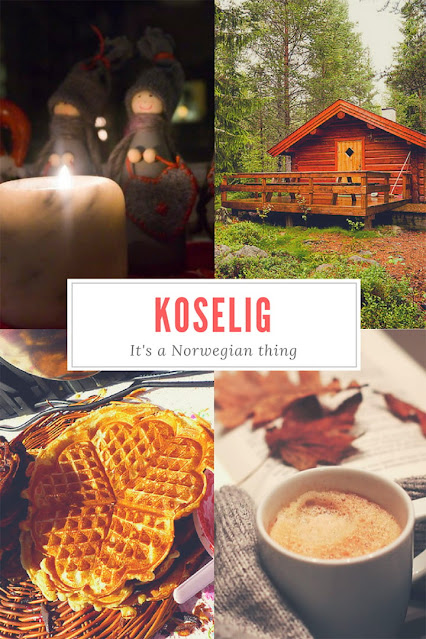




















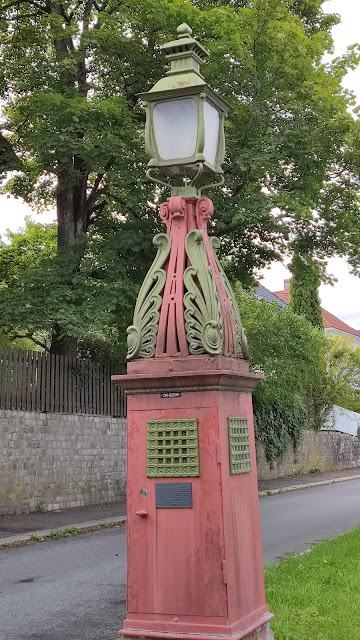










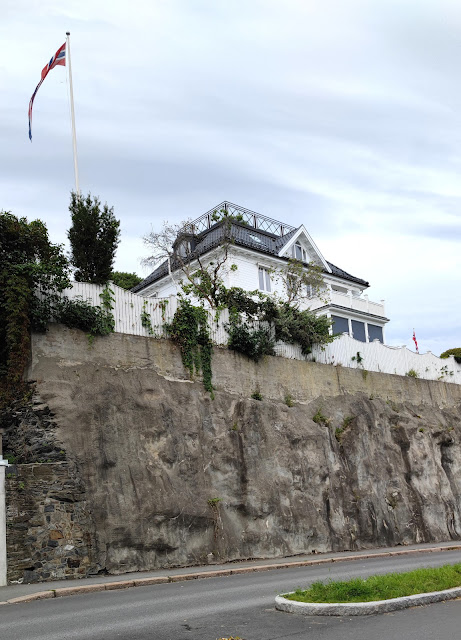
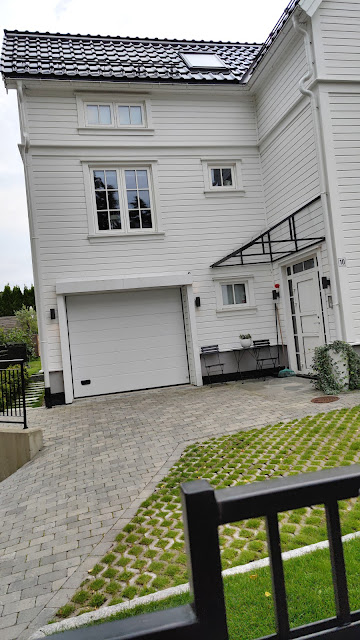












































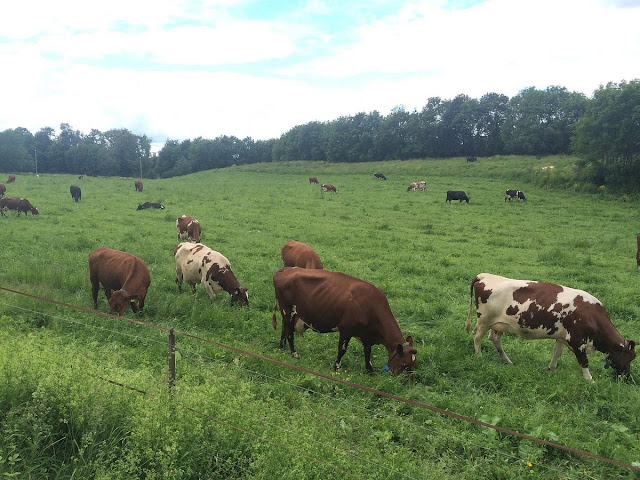









































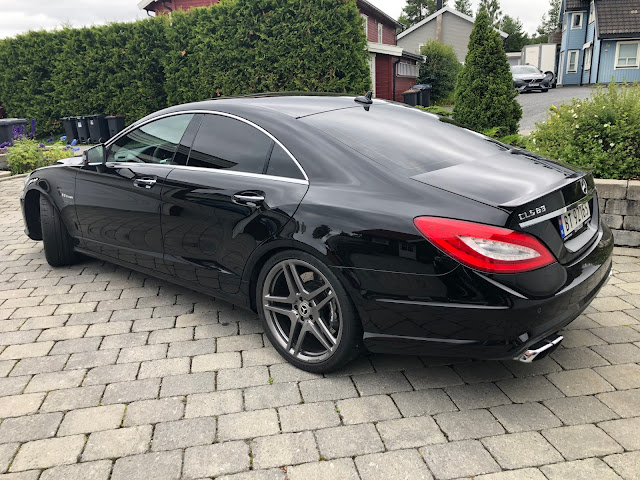
















































































.jpg)
























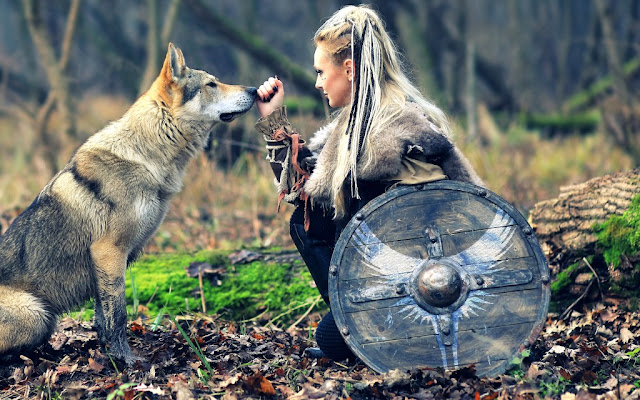

























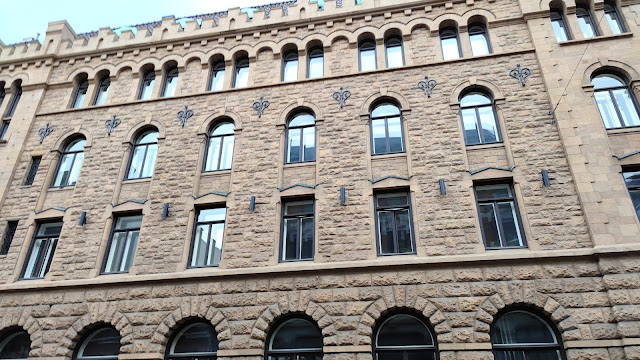




















No comments:
Post a Comment
Don't be shy: leave your comments :)